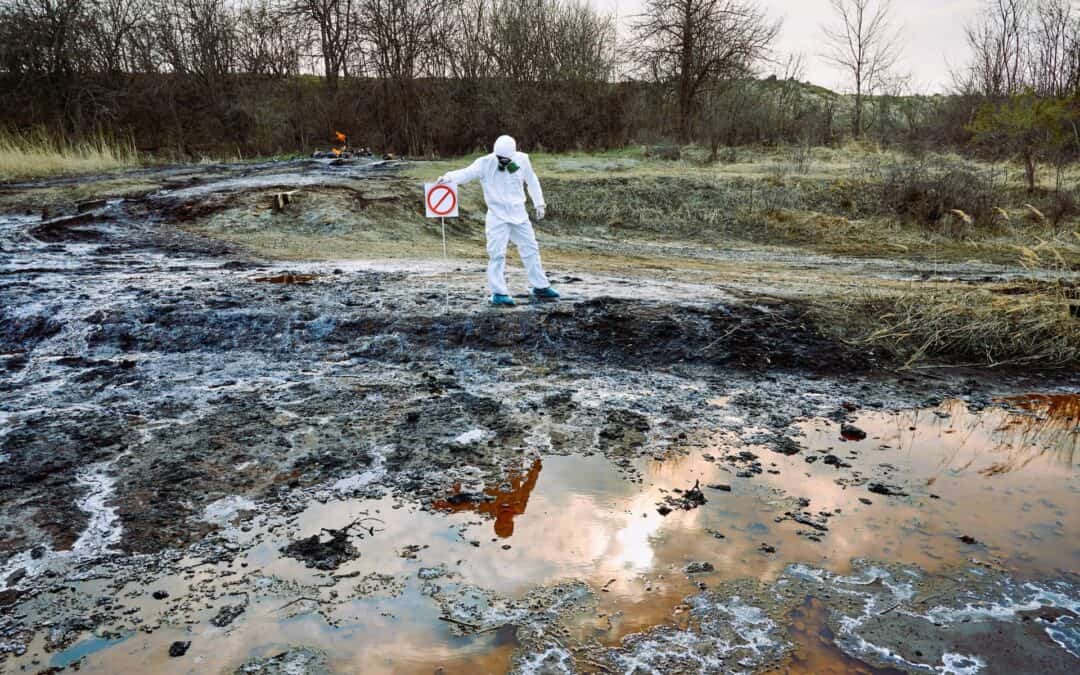Environmental remediation plays a pivotal role in paving the way for sustainable development, which is why it’s becoming increasingly crucial in our modern world. This article delves into why environmental remediation matters for sustainable development, covering various aspects from clean water initiatives to the economic benefits it brings. Environmental remediation not only helps restore ecosystems but also supports community health and drives policy change.
The Basics of Environmental Remediation
Environmental remediation involves the removal of pollution or contaminants from environmental media such as soil, groundwater, sediment, or surface water. For instance, in areas where industrial spills have contaminated the groundwater, remediation methods are employed to clean and restore the water to a safe level for human consumption and ecosystem health.
- Common methods include soil vapor extraction, bioremediation, and groundwater pumping.
- Technologies such as phytoremediation use plants to absorb contaminants.
- Remediation is essential in preventing contaminants from spreading and affecting larger areas.
Clean Water and Environmental Remediation
Ensuring access to clean water is a significant focus of environmental remediation. Pollutants such as heavy metals, pesticides, and industrial chemicals can seep into water sources, creating a critical need for remediation strategies that can address and reverse these conditions.
- Remediation projects have successfully restored the quality of water bodies affected by industrial waste.
- Techniques such as activated carbon filters and membrane bioreactors are often used in these projects.
- Clean water initiatives help sustain wildlife and provide communities with safe drinking water.
Fire Prevention Through Environmental Remediation
Environmental remediation also plays a crucial role in fire prevention, especially in areas prone to wildfires. By managing vegetation and removing hazardous materials from the land, remediation efforts can significantly reduce the likelihood of fires.
- Controlled burns are a technique used to manage vegetation effectively.
- Soil remediation can help restore land damaged by previous fires.
- Preventing fires in structures helps protect ecosystems and human communities alike.
Hydrocarbon Cleanup in Environmental Remediation
Hydrocarbon spills, such as oil leaks, pose severe threats to both terrestrial and aquatic environments, making hydrocarbon cleanup an essential aspect of environmental remediation. Effective remediation methods ensure that these harmful pollutants are efficiently removed to prevent long-term ecological damage and health risks.
- Technologies like environmentally friendly safe materials that work on soil, water, and concrete surfaces can be used used to address oil spills.
- Hydrocarbon cleanup is critical for maintaining marine life and the health of coastal communities.
- The process helps to minimize economic loss from spill incidents.
Mold Removal and Indoor Environmental Quality
Mold growth in buildings can lead to significant health problems and structural damage, highlighting the importance of mold removal as part of indoor environmental remediation. By addressing mold issues, remediation helps to improve indoor air quality and inhabitant health.
- Remediation specialists use moisture control and advanced cleaning techniques.
- Ensuring indoor environmental quality is essential for public health.
- Mold remediation prevents long-term damage to buildings and health complications.
Environmental Remediation and Ecosystem Restoration
By removing pollutants and restoring natural conditions, environmental remediation contributes significantly to ecosystem restoration. Healthy ecosystems are vital for biodiversity, climate regulation, and the well-being of local communities.
- Projects often focus on habitats that have been degraded by industrial activity.
- Restoring natural conditions helps endangered species recover.
- Ecosystem restoration supports the overall health of the planet.
Reducing Pollution Through Remediation
Environmental remediation efforts play a vital role in reducing pollution levels across various media, thus protecting ecosystems and human health. Whether it’s cleaning up chemical spills or managing agricultural runoff, remediation helps to maintain the balance of nature.
- Techniques such as encapsulation lock away pollutants.
- Chemical oxidation breaks down hazardous substances.
- Effective pollution management supports biodiversity and environmental health.
Economic Benefits of Environmental Remediation
Environmental remediation isn’t just good for the planet—it also makes economic sense. By cleaning up polluted sites, communities can reuse these areas for development, increasing property values and attracting new business investments.
- Clean sites encourage tourism and recreation.
- Remediation can lead to job creation in cleanup and monitoring.
- Economic growth follows the revitalization of remediated areas.
Community Health and Remediation
A clean environment is essential for public health. Remediation projects that clean up environmental contaminants help to reduce the incidence of diseases related to pollution, such as respiratory problems and even some forms of cancer.
- Removing toxins from the environment directly benefits community health.
- Public spaces become safer for recreational activities.
- Community health improvements are often immediate and long-lasting.
Environmental Remediation Driving Policy Change
Successful environmental remediation projects often inspire changes in local and national policies, leading to stricter regulations on pollutants and improved practices across industries.
- Case studies demonstrate the effectiveness of policy-driven remediation.
- New laws often encourage innovation in cleanup technologies.
- Policy changes ensure a systematic approach to preventing future contamination.
Challenges in Environmental Remediation
Despite its benefits, environmental remediation faces several challenges, including technical difficulties, financial constraints, and regulatory hurdles. Yet, each challenge presents an opportunity for innovation and improvement in remediation practices.
- Complex pollutants require advanced solutions.
- Funding is crucial for large-scale remediation efforts.
- Regulations need to balance effectiveness with economic impact.
Key Takeaways from Why Environmental Remediation Matters for Sustainable Development
This article explored various facets of why environmental remediation is indispensable for sustainable development, from ensuring clean water and preventing fires to enhancing economic growth and community health.
Frequently Asked Questions About Environmental Remediation
- What is the most common method of environmental remediation?
- Bioremediation, which uses natural organisms to break down pollutants, is among the most common and effective methods.
- How long does a typical environmental remediation project take?
- The duration can vary widely depending on the contamination level and the chosen remediation technology, ranging from several months to several years.
- Can environmental remediation completely remove all pollutants?
- While remediation can significantly reduce pollution levels, some deeply ingrained contaminants may not be entirely removable.
- What are the signs that an area needs environmental remediation?
- Signs include visible pollution, poor water quality, abnormal vegetation death, and health issues among local residents.
- Is environmental remediation cost-effective?
- Yes, the long-term benefits of remediation, such as improved public health and increased property values, often outweigh the initial costs.
Titan Source 1 is a leading environmental consulting company specializing in innovative solutions for environmental waste cleanup. Our cutting-edge products and expert services are designed to protect and restore natural ecosystems. With a commitment to sustainability and excellence, Titan Source 1 provides tailored strategies to address diverse environmental challenges. Partner with us to achieve a cleaner, safer, and healthier planet for future generations.


